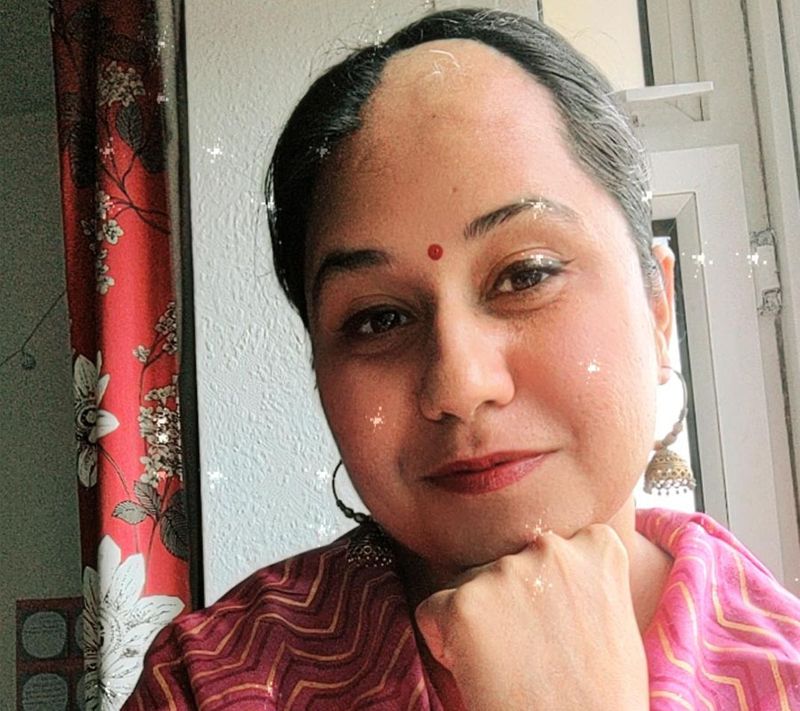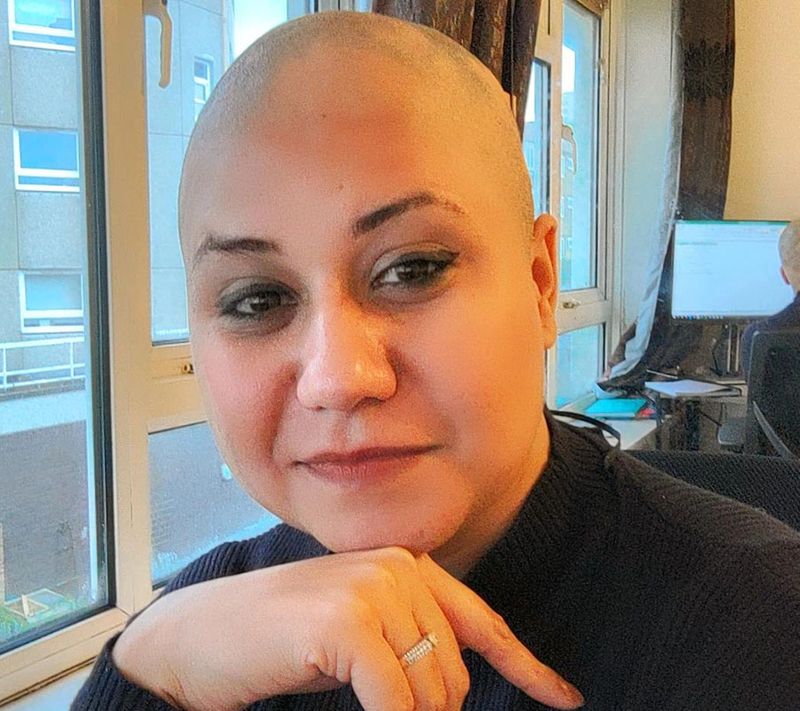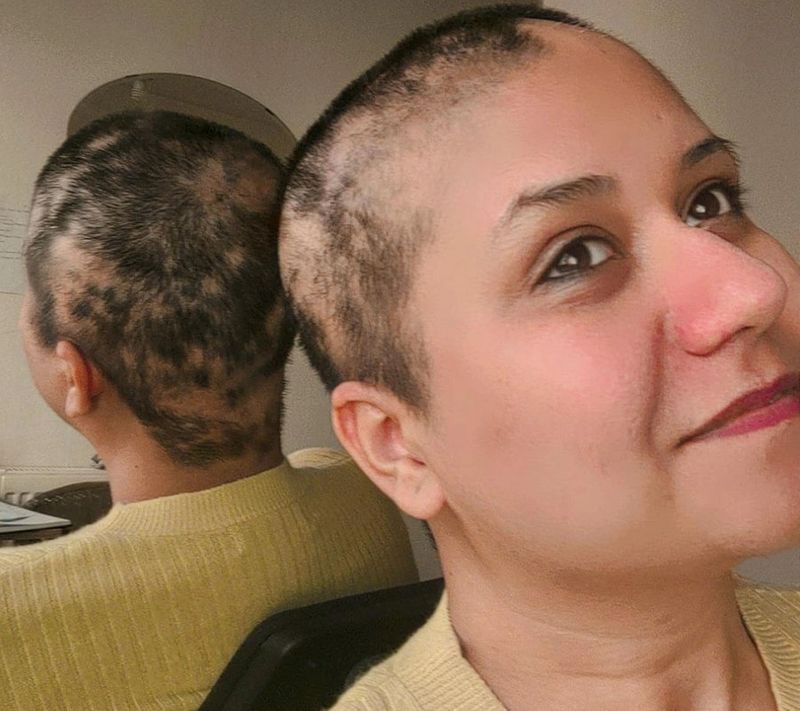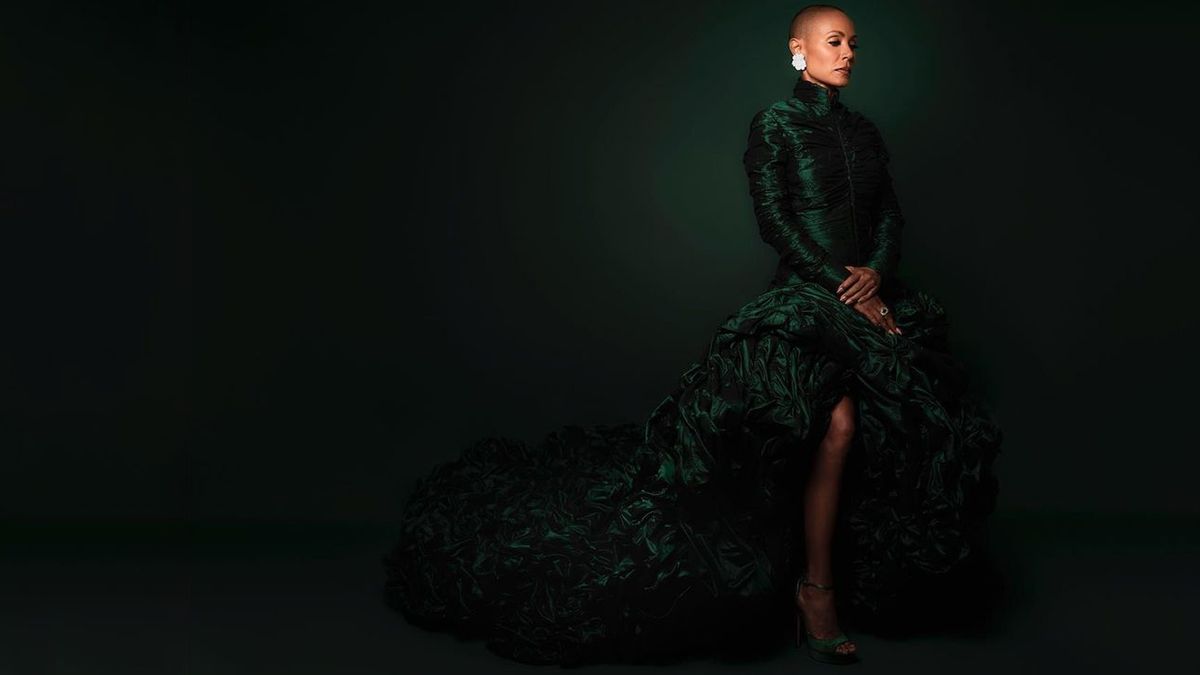Hair is everything… You don’t need to be a die-hard fan of the cult web series Fleabag to recognise this statement—just being an Indian woman is enough. After all, we’ve grown up with our grandmothers telling us just how important a long mane is for us female folk. “It’s your crowning glory, your real beauty,” mine used to say to me; I am sure yours might have said something similar. This week, however, after the Will Smith - Chris Rock spat that brought Jada Pinkett Smith’s alopecia areata diagnosis into the limelight, many women like me are wondering: is it really?
Alopecia areata is not as rare as we think—news reports suggest that about a million Indians suffer from this type of hair loss. But what is this condition? And why are people kicking up a fuss about a little bit of hair loss? Well, for starters people with alopecia start losing hair in patches, often suddenly. And in most cases, there is no cure—no remedy to make the hair grow back.
“Alopecia areata is loss of hair in quarter-sized spots from the scalp or hair-bearing areas on the body like the beard in men,” explains Dr Madhuri Agarwal, celebrity dermatologist and founder of Yavana Aesthetics Clinic (Mumbai). “It is usually an autoimmune response, wherein your own body attacks your hair follicles to cause bald spots,” she adds.
Diagnosing alopecia

Two years ago, Shaily Malik—now 33—noticed a small little bald patch on her head. “I completely ignored it for some time. After that, I was misdiagnosed and treated for a fungal infection. By the time I received the correct diagnosis of alopecia, I had already lost most of the hair on my head and part of my eyebrows,” she says.
For most people with alopecia, that’s how the disorder starts—with a tiny bald patch that could just be anything. Explains Dr Agarwal: “The hair loss can start as small, coin-sized bald patches—it could be just one or multiple. The alopecia area appears smooth with hair at the edges that are broken (also called exclamation point hair). The patch rarely burns, itches, or has rashes. Sometimes, the alopecia patch may recover while newer patches may form around it; smaller patches of alopecia can also converge together to form bigger alopecia patches. People may also experience loss of eyebrows and eyelashes.”
Even though genetics, stress, and lifestyle are often held responsible for causing alopecia areata—the disease is complicated with many factors contributing to its occurrence. A 2018 research paper published in the International Journal Of Trichology also suggests that its prognosis isn’t predictable either. While many patients tend to heal spontaneously, others can have a more chronic disease—with varying degrees of balding that may never show hair growth again.
Not just a cosmetic problem

In a world with impossible beauty standards for women, it’s hard to cope with anything that sets you apart from what you’re supposed to look like. And women aren’t supposed to have crew cuts, or worst still, a bald head. No siree! It is cascading locks that we associate with beautiful women. Now imagine a disorder that makes reaching that goal impossible.
“Given that in the case of men balding is a more widely accepted phenomenon, the impact of alopecia may be different for them as compared to women—who may experience more deleterious effects on their mental health and well-being,” says Kamna Chhibber, Delhi-based clinical psychologist and head - mental health at Department of Mental Health and Behavioral Sciences at Fortis Healthcare. “This adds more to the distress of having alopecia,” she adds.
Not just distress—alopecia can lead to a slew of mental health problems for the people who suffer from it. A 2005 study published in the prominent peer-reviewed health journal The BMJ goes on to suggest that those with alopecia are at a higher risk of developing psychiatric disorders like anxiety, social phobia, paranoid disorder, and even clinical depression. “Given that alopecia can affect how an individual is perceived and their own body image, it can lead to negative social experiences. Moreover, it can affect their mood, making them feel low and sad,” chimes Chhibber.
Then there is the impact of alopecia on the way people perceive themselves and the way they think the world perceives them. “This can lead to the experience of fatigue and tiredness, and impact their concentration and focus” she adds.
Shaily’s story is no different. “Alopecia is an autoimmune disease and you have no control over how or to what extent it will progress. This uncertainty of whether I will go completely bald or I might have some-re growth was the most stressful part of alopecia for me,” she says. “My morning would begin by seeing lumps of hair strands on the pillow. Throughout the day I could see how my hair would simply come out in huge chunks when I brushed it or washed it. I stopped looking in the mirror because I could not recognise myself.”
Shaily’s struggle didn’t simply stop there. She also started losing her eyebrows and eyelashes, and her tussle with alopecia catapulted her into the throes of an identity crisis. “I would start crying any time of the day because I thought I was losing my identity. I wasn’t confident enough to go out in public because I was not comfortable with how I looked at that time. All this stress was only making things worse for me and I lost almost half of my hair, which left big bald spots all over my head,” she shares.
“Hair loss, especially for women, is a hard subject that carries shame, devastation, grief, anxiety, depression, and so much pain. I was not working at the time and all I feared was that even if I get selected for an interview, how will I face people?” Shaily says, candidly.
“The anticipation of having to go around the same conversations and feeling that people may not fully understand their condition, may reject their experience, or be amused by it harms the person's state of emotional and mental well-being,” explains Chhibber.
There may not be a cure, but there is hope

When it comes to the line of treatment for alopecia areata, it’s important to understand that there is no cure for this disorder. However, certain medical interventions can help patients grow back the lost locks. “For starters, it is important to note that alopecia areata should not be self-treated with home remedies—rather, a board-certified dermatologist should be consulted,” stresses Dr Agarwal.
“There are various standard treatments for alopecia globally. A dermatologist can prescribe topical or oral medications such as steroids and immunosuppressants or administer injectable steroids in the alopecia areata patches,” she adds.
However, treatments for alopecia have their limitations and not all patients might experience hair growth. Moreover, in many patients as one bald patch witnesses the emergence of new strands, another may start forming. “When the alopecia is persistent and irreversible, there are camouflage tools like hair wigs and patches that can be used. Eyebrow hair loss can be covered with micro-blading and eyelash extensions can be tired,” suggests Dr Agarwal.
Self-acceptance is key

When medicine fails, self-acceptance needs to kick in. After a series of treatments involving Ayurvedic interventions, steroid creams and injections, Shaily set out on a path to embrace herself. “Just to divert my mind from the stress and constant anxiety of having alopecia, I started sharing some videos and pictures of my bald head on social media—and I was shocked to see how supportive people are around me. This made such a positive impact on my confidence,” she says.
“Thanks to the support from my family and friends, I stopped feeling ashamed of my alopecia; instead I started embracing it. Recently, I shaved my head and it felt like freedom to me. I gave job interviews, started working, travelled to different cities, and did every daily activity without hiding my baldness. People still stare when I go out, but it does not bother me anymore,” Shailyquips.
Something’s got to give…

Let’s revisit the impossible beauty standards for a minute. From commercials to films to even social media now—every woman on every screen looks picture-perfect with wonderfully-coiffed hair, flawless skin, lean bodies, and on-fleek attires. Stray away from this fashion-forward image of a woman conjured up by celebrities and influencers, and body image issues are bound to crop up.
“I think that social media is getting very toxic with everyone talking about how to get perfect hair, skin, and body—so much so that we have forgotten how to be our true self in public,” notes Shaily. While shattering the idealistic image of a beautiful woman that we carry around with us might take time still, we can bring about change in the way we approach women with alopecia.
“How people communicate can make a huge difference to people with alopecia. It is important to avoid asking too many questions, and help the person understand that they are indeed accepted for who they are and that the changes they are going through do not impact our perceptions of them,” suggests Chhibber. “Exaggerated responses and comments on their appearance should be avoided, and the focus should be on listening to them. Reassure them that you are there as a supportive individual, and not someone who is prying to know more,” she adds.
“We need to support the people around us who have alopecia or any illness that makes them visibly different,” implores Shaily. “It is already a challenge for them to embrace their condition and go out of their comfort zone. They know they can wear wigs and hats to hide their baldness, but they choose not to. Don’t make fun of them—instead appreciate the fact that they are showing their true self,” she concludes.
Thin or fat, tall or short, fair or dark, alopecia or no alopecia—women’s true selves are hardly allowed to strut freely. But if there’s one thing that Will Smith’s slap heard around the world has taught us, it’s this: bullying women for the way they look is not okay. Hair might not be everything, but emotional well-being is.






